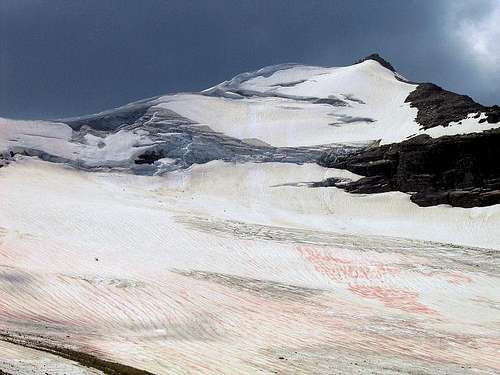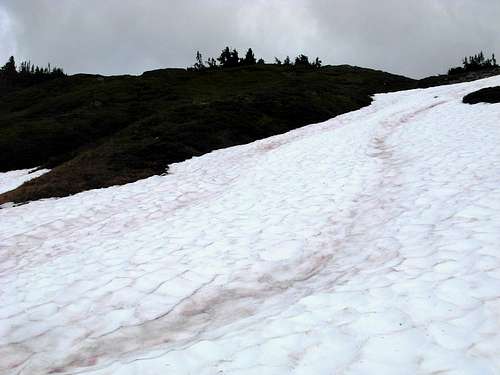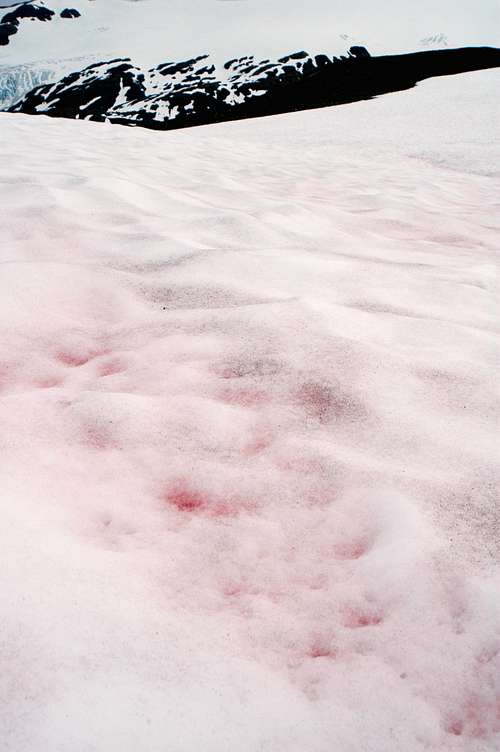gimpilator - Jul 22, 2010 4:40 pm - Voted 10/10
Watermelon SnowThank you for writing this informative article. I see this phenomenon every year in the Cascades and always find it intriguing. A ranger once told me that 50 percent of people can eat this snow with no ill-affects but that half of people get sick from it. I once saw someone get violently ill several hours after eating it. Thankfully he felt fine after vomiting. Another time, we took a sample of pink snow in a jar to be analyzed much as Captain John Ross did in your article. The water in the jar turned very dark after it had all melted. Now I have only one question for you... When will you write an article for snow worms?
Redwic - Jul 22, 2010 4:43 pm - Hasn't voted
Re: Watermelon SnowPerhaps that will be a future supplemental article to this one.
;-)
rasgoat - Jul 25, 2010 6:22 am - Voted 10/10
Red snowI too have wondered about this! Thanks! and yes, what abbout the snow worms!
EastKing - Jul 25, 2010 9:52 am - Voted 10/10
Great article!The mystery has been solved! Algae is the cause and I will not be eating much of it.
vancouver islander - Jul 25, 2010 11:04 am - Voted 10/10
Nice summaryGood idea to put together such a fine summary of the origins of a phenomenon that many have seen and most have only wondered about.
It's very common on the Island and I already knew about its origins. Nevertheless, you provided some great historical and biological detail that I enjoyed very much.
In legend red snow on Forbidden Plateau here on the Island was thought to be all that remained of wives and children left up there for safety by warriors of the Comox First Nations as they fought raiders from the mainland. Hence the name of the place. And preferable, perhaps, to the real reason: an intriguing advertising catch-phrase to lure visitors to the commercial operations up there in the days before it became a park.
Of course there's yellow snow too. Its origins are much more banal but it's also not to be eaten :-)
Cheers, Martin
liferequiresair - Jul 25, 2010 2:33 pm - Hasn't voted
coolThanks for the great info. I've wondered about this stuff for a while now and always have people ask me about it. I've always told them not to eat it though because I've heard of those who partake experiencing giardia-like symptoms.
lcarreau - Jul 25, 2010 9:18 pm - Voted 10/10
You just burst my bubble !I always thought it had something to do with Sasquatch.
Here in Arizona, we don't have a problem with red or yellow snow.
In fact, we don't have any snow, and that's the problem !!!
erny - Jul 26, 2010 1:00 pm - Hasn't voted
oldnewswe actually knew this about 30+ years ago. Research at CU Boulder and on the snowfields of the Indian Peaks range above Nederland was the research area investigated by John Clark when he worked for NOAA, etc.
Jakester - Jul 28, 2010 11:45 am - Voted 10/10
Re: oldnewsOlder News. According to this very article, we've known exactly what watermelon snow is since the late 1800's.
hgrapid - Jul 28, 2010 10:52 pm - Hasn't voted
I always figured...I always figured it was blood. I figured a large animal ate a smaller one, and left blood on the snow.
GroundControl - Jul 29, 2010 5:39 pm - Voted 10/10
Thanks!Facinating article...will keep my eye out for this!
Redwic - Aug 1, 2010 2:42 am - Hasn't voted
Re: Thanks!This article must have really caught the attention of some people, either by those unfamiliar with the phenomenon or by those who have seen it and did not know the cause. I found two people talking about this article this weekend while climbing.
Mike Lewis - Aug 1, 2010 12:30 pm - Voted 10/10
AwesomeI had read about this phenomenon before and long since forgotten (explaination was too brief.) I think your article was very well written and thorough. I love it when SP features interesting and useful information like this. I also agree with Gimpilator: write one about Snow Worms!
mtybumpo - Aug 2, 2010 12:30 pm - Voted 10/10
Great Article!I've seen a lot of Watermelon Snow but I never knew what it was called or why it was red. Now I know! Very interesting and informative article. Thank you!
Tangeman - Aug 2, 2010 1:51 pm - Voted 10/10
Cool!I was just up in the Cascades, and saw it and just thought it was minerals, but this is cool. Thanks for the article!
D-bo - Aug 3, 2010 3:06 pm - Voted 10/10
Now I know......And knowing is half the battle.
Redwic - Aug 5, 2010 12:34 am - Hasn't voted
Re: On a Related note:Very interesting. I love finding out the obscurities and oddities of our world!
gliderman - Aug 5, 2010 7:54 pm - Hasn't voted
Re: On a Related note:Me, too. I love stumbling onto information about things I am aware of, but explain what is going on. And, new things, too. I may be retired from teaching, but still love learning new things.
JKipple - Aug 6, 2010 2:37 pm - Voted 10/10
Nice.I always wondered about that, thanks for the article
EricChu - Aug 12, 2010 6:22 pm - Voted 10/10
A highly interesting article!Thanks for the work you did and for posting this - I found it all very interesting, for one thing because I have also seen reddish-colored snow many times in the Alps as well. Sometimes it was believed that the coloring of the snow in the Alps was caused by desert sand from the Sahara, which is often blown over to Europe when there are the strong southern winds that create the alpine Foehn, which causes almost "unnaturally" clear light (I've seen some pictures posted of the American mountains here on SP, by the way, which reminded me very strongly of this!). Yet it has been clearly proven that the desert sand has nothing to do with this in the Alps either - it is the algae!
























Comments
Post a Comment